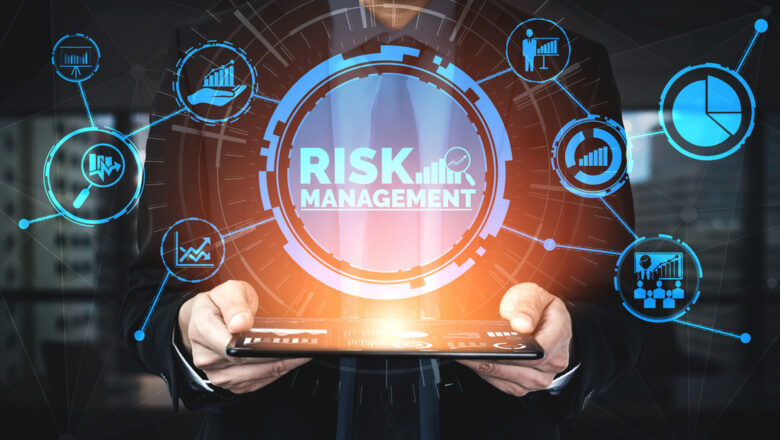Modern businesses face increased risks, from cyberattacks and financial fraud to regulatory compliance gaps and operational disruptions. Traditional risk management approaches, while crucial, often can’t keep pace with the speed and complexity of the digital world. Artificial intelligence (AI) enables businesses to identify, assess, and mitigate risks with unprecedented precision and speed.
This technology is redefining how businesses protect themselves in a connected world, not just by upgrading existing methods. AI transforms the vast amounts of data generated daily into actionable insights, improving decision-making and security. AI in risk management is about surviving in a world where risks are increasing as quickly as responses. Every business leader who wants to secure their company’s future must understand how AI is transforming risk management.
Understanding AI in Risk Management:
AI in risk management employs machine learning algorithms, natural language processing, and predictive analytics to identify, assess, and respond to business risks. AI systems can learn from new information patterns to identify developing risks before they become major problems, unlike traditional risk assessment methods that rely primarily on historical data and manual analysis.
These advanced algorithms rapidly analyze vast databases, including trading trends, employee behavior, market fluctuations, and regulatory changes. Machine learning models can find small rule-breaking actions that human analysts might overlook, while natural language processing algorithms check news, social media, and regulatory updates for issues that could harm a company’s reputation or compliance.
This multi-layered technology provides real-time monitoring, predictive forecasting, and automated responses. This holistic approach transforms risk management into a competitive advantage, helping companies anticipate and resolve problems.
Benefits of AI-Driven Risk Management:
One of the greatest benefits of AI in risk management is accuracy. Traditional methods suffer from human bias and insufficient processing power, leading to missed threats and false positives. AI systems analyze data objectively, reducing errors and improving risk assessments. AI-powered fraud detection achieves over 95% accuracy, compared to only 85% for traditional methods used by financial institutions.
Increased speed and efficiency are also transformative. AI processes data faster than humans, enabling real-time risk monitoring across a wide range of business operations. By analyzing risks in minutes instead of weeks, companies can respond more quickly.
Cost savings are another advantage. While implementing AI requires investment, the long-term cost savings are significant. Automated risk monitoring can reduce the need for large teams of people and prevent costly incidents that traditional methods overlook. AI-powered claims processing can reduce insurance operational expenses by 30%.
Growing businesses benefit from scalability. AI systems can handle the increasing volume and complexity of data without increasing costs or staff. Risk management capabilities evolve with business growth and maintain the level of protection, regardless of the organization’s size.
Issues and Considerations:
Data quality issues hinder the implementation of AI for risk management. AI systems are entirely dependent on input data, and insufficient data can lead to errors. Before deploying AI solutions, organizations must cleanse and validate the data to ensure the algorithms receive accurate, complete, and relevant data.
Implementation complexity is another significant issue. Integrating AI systems with risk management frameworks requires planning, technical expertise, and organizational change management. Many companies miscalculate implementation timelines and resources, resulting in project delays or poor performance.
Compliance issues further complicate matters, especially in highly regulated industries such as finance and healthcare. AI decisions must be transparent and accountable to meet regulatory requirements. A clear governance structure must balance AI capabilities with compliance.
The implementation of AI is facing resistance from some. Risk managers may fear losing their jobs or feel uncomfortable automating critical assessments. Successful implementation requires extensive training and clear communication about how AI can enhance human capabilities.
The Future of AI in Risk Management:
New technologies will revolutionize risk management. Quantum computing will enable more complex calculations and pattern recognition, while enhanced neural networks will improve the accuracy of predicting rare but impactful events. Integration with IoT devices will enable real-time asset and process monitoring.
More advanced and affordable AI-driven risk management solutions will drive industry convergence. Cloud-based AI services will provide enterprise-grade protection for small and medium-sized businesses, making advanced risk management more accessible across all industries.
Predictive capabilities will be enhanced, allowing companies to simulate complex scenarios and test risk mitigation solutions before implementation. These enhanced simulations will help companies prepare for unprecedented challenges and strengthen contingency plans.
Planning for an AI-Driven Future:
AI-driven risk management requires a comprehensive strategy that aligns technological capabilities with business objectives. Integrating AI requires significant cultural and operational changes, making leadership engagement crucial.
Investing in human capital is just as important as implementing technology. Risk managers must learn to evaluate algorithmic insights and make strategic decisions based on AI recommendations. Employee development benefits businesses and alleviates concerns about employee turnover.
AI systems must operate within acceptable parameters while ensuring transparency and accountability through strong governance frameworks. These frameworks must address data privacy, algorithmic bias, and decision-making to maintain stakeholder trust and comply with regulations.
Conclusion:
AI is transforming how businesses manage risk, turning reactive processes into strategic advantages. This technology, and the obstacles it overcomes during implementation, will help businesses achieve long-term success in a complex business environment. The question is not whether AI will transform risk management, but how quickly businesses can respond to its transformative power.
Businesses that delay implementation risk falling behind competitors who are leveraging AI to identify opportunities and minimize risks. Tomorrow’s businesses will combine human experience and AI to create effective risk management systems that safeguard value and foster growth. Companies must be agile and committed to continuous learning to adapt their risk management strategies to the new risks and opportunities presented by advances in AI technology.
FAQs:
1. What risks can AI uncover that traditional methods cannot?
AI can uncover subtle patterns and anomalies in vast data sets that humans cannot detect. These threats include emerging cyber threats with new attack patterns, complex financial fraud involving multiple accounts or transactions, supply chain disruptions caused by minor delays or quality discrepancies, and reputational risks on social media that haven’t yet become mainstream.
2. What is the average implementation time for an AI risk management system?
Implementation time varies depending on company size, infrastructure, and the scope of the implementation. Simple AI solutions focused on individual risk areas can be implemented in 3-6 months, while enterprise-level systems can take 12-18 months. A mature data infrastructure and change management can accelerate implementation.
3. What are the requirements for a successful AI risk management implementation?
Success requires a high-quality data infrastructure, management support, sufficient technology and training budgets, capable personnel or AI partners, a clear governance framework, and strong change management. Organizations must also realistically estimate implementation and maintenance timelines.
4. How does AI risk management fit into the compliance environment?
Transparency, auditability, and documentation of decision-making processes are crucial for AI systems. The compliance elements in many AI platforms generate audit trails and explain algorithmic assessments. The governance framework should describe how AI results are used in compliance reporting and decision-making.
5. How much can organizations expect to spend on AI-driven risk management?
Costs vary depending on the complexity of the solution and the size of the organization. For small organizations, basic AI-driven risk management tools can cost $1,000–$5,000 per month, while larger solutions can cost $50,000–$500,000 per year. Additional costs may apply to data infrastructure upgrades, staff training, maintenance, and consulting. Most companies achieve a return on their investment within 18–24 months through increased efficiency and loss prevention.




